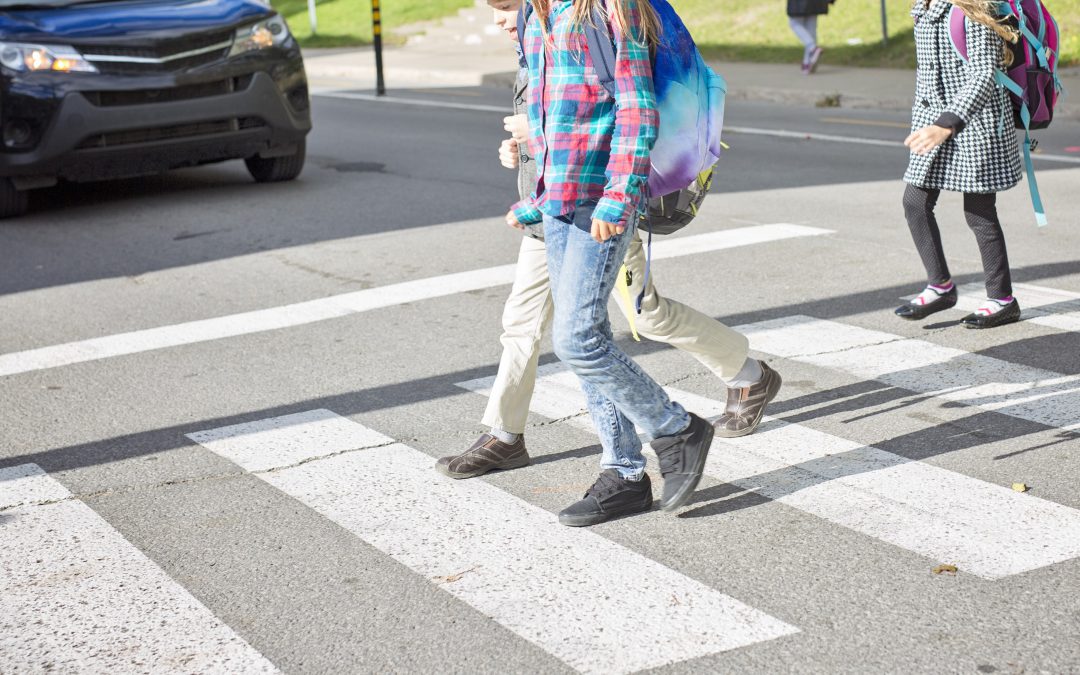ROAD SAFETY – CYCLING

From 2015/16 to 2019/2020, injuries from cycling were one of the most common cause of hospitalizations among chilren and youth 0-14-years-old.1
OVERVIEW
Cycling is a popular activity for Canadians of all ages, and is used for recreation, for exercise, and as a means of transportation.
Cyclists have the same rights and responsibilities as motor vehicle drivers. However, cyclists, like pedestrians, are vulnerable to significant injuries or death in crashes with larger motorized vehicles.
Each year in British Columbia, approximately 2,636 cyclist-related incidents occur, resulting in about 1,539 injuries and an average of 7 fatalities.2
These injuries can be more severe when motor vehicle drivers hit children. The top contributing factors attributed to crashes with cyclists are driver distraction and failure to yield.
In 2023, transport incidents involving pedal cyclists in B.C. resulted in a total cost of $79 million, constituting 14% of the total costs from transport incidents. This included $60 million in direct costs, such as healthcare expenditures, and $18 million in indirect costs, related to lost productivity.4

On average, nearly 4 out of 5 crashes involving cyclists occur at intersections in BC.3
PREVENTION
- Wear an approved bicycle helmet that fits well: A helmet should meet safety standards and fit properly: the helmet should sit level on your head (not tilted back) with the front edge one inch or less above your eyebrows, and should fit snugly so that it can’t roll off of your head.
- Check your gear: Make sure the brakes on your bicycle are adjusted properly, with the brake pads and cables in good condition.
- Make sure they see you: In order to make yourself visible in bad weather or poor light conditions, wear reflective gear and keep a headlight on the front and back of your bike.
- Follow the rules of the road: Remember to obey all traffic signs and signals. Stay on the right side of the road, and cycle in the same direction as the flow of traffic. This makes you more visible to drivers, and they will be able to see your hand signals. Use designated bike lanes whenever possible. Use hand signals and shoulder check before making any turns.
- Be a good example: When biking with children or inexperienced cyclists, have them follow your lead and bike in single file.
- Stay alert: Be aware of people in parked vehicles, as well as idling vehicles, to avoid getting hit by an opening door.
News

59 communities receive funding for Vision Zero projects
Over $1 million in grants to go towards improving vulnerable road user safety across British Columbia, including in rural, remote, and Indigenous communities.

New website outlines financial and human cost of injury in BC
costofinjury.ca uses interactive charts and graphs to illustrate the burden of injury in BC.

37 projects funded in this year’s Vision Zero Grant Program
Projects funded include improvements such as crosswalk infrastructure, closed streets, traffic calming, speed limit reduction pilots, and road safety planning.

First-ever Vision Zero Summit in BC
Over 100 road safety experts, municipal government staff, civic leaders, researchers, and public health professionals attended the first-ever Vision Zero summit in BC.
1. Data Source: Discharge Abstract Database (DAD), Ministry of Health, BCIRPU Injury Data Online Tool, 2021. 2015/16 to 2019/20.
2. ICBC. Quick Statistics: Crashes involving. 5-year average from 2018-2022. Available from: https://public.tableau.com/app/profile/icbc/viz/QuickStatistics-Crashesinvolving/CrashesInvolving
3. ICBC. Sharing the Road with Others: Cycling Safety. Available from https://www.icbc.com/road-safety/sharing/Pages/cycling-safety.aspx
4. Rajabali F, Zheng A, Turcotte K, Bruin S, Pike I. (2022). Cost of Injury in British Columbia 2022. BC Injury Research and Prevention Unit: Vancouver, BC. [Cost from 2018 converted to 2023 dollars using the Bank of Canada inflation calculator]
